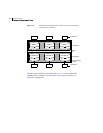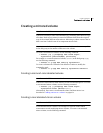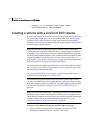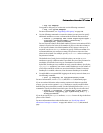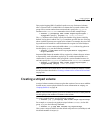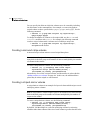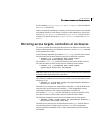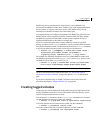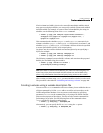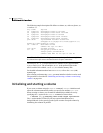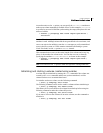
256 Creating volumes
Creating a RAID-5 volume
See “Specifying ordered allocation of storage to volumes” on page 245 for a
description of other ways in which you can control how volumes are laid out on
the specified storage.
Creating a RAID-5 volume
Note: VxVM supports this feature for private disk groups, but not for shareable
disk groups in a cluster environment.
A RAID-5 volume requires space to be available on at least as many disks in the
disk group as the number of columns in the volume. Additional disks may be
required for any RAID-5 logs that are created.
You need a full license to use this feature.
You can create RAID-5 volumes by using either the
vxassist command
(recommended) or the
vxmake command. Both approaches are described below.
A RAID-5 volume contains a RAID-5 data plex that consists of three or more
subdisks located on three or more physical disks. Only one RAID-5 data plex can
exist per volume. A RAID-5 volume can also contain one or more RAID-5 log
plexes, which are used to log information about data and parity being written to
the volume. For more information on RAID-5 volumes, see “RAID-5 (striping
with parity)” on page 45.
Caution: Do not create a RAID-5 volume with more than 8 columns because the
volume will be unrecoverable in the event of the failure of more than one disk.
To create a RAID-5 volume, use the following command:
# vxassist [-b] [-g diskgroup] make volume length layout=raid5 \
[ncol=number_of_columns] [stripewidth=size] [nlog=number] \
[loglen=log_length]
For example, to create the RAID-5 volume volraid together with 2 RAID-5 logs
in the disk group, mydg, use the following command:
# vxassist -b -g mydg make volraid 10g layout=raid5 nlog=2
This creates a RAID-5 volume with the default stripe unit size on the default
number of disks. It also creates two RAID-5 logs rather than the default of one
log.
Note: If you require RAID-5 logs, you must use the logdisk attribute to specify
the disks to be used for the log plexes.



